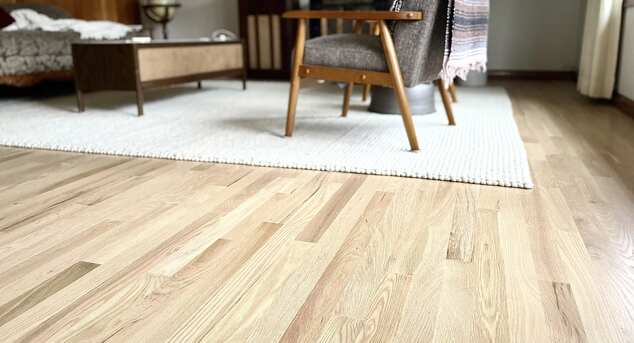Tips for Choosing the Best Water-Based Polyurethane
Posted by Aaron Schaalma
When it comes to protecting and enhancing the look of your wood surfaces, water-based polyurethane is a popular choice. Not only is it easy to apply, but it also dries quickly and has low levels of volatile organic compounds (VOCs). However, with so many options on the market, it can be overwhelming to choose the best water-based polyurethane for your needs. In this article, we will discuss some tips for selecting the best water-based polyurethane for your project.
Consider the Type of Surface
The first thing to consider when choosing a water-based polyurethane is the type of surface that it will be applied to. Different surfaces may require different types of finish. For example, if you have a wood floor that is more heavily used, you may need a more durable and heavy-duty polyurethane like a UV-cured water-based polyurethane. UV water-based polyurethane allows the installer to get back on the floor as soon as it’s dried and cured. Learn more about the UV curing process.
Look for UV Protection
When your wood surfaces are likely to come in contact with sunlight, selecting a water-based polyurethane that offers UV protection becomes a higher priority.
UV rays can cause wood to fade and discolor over time, so polyurethane with UV protection will help maintain the color and appearance of your wood surface. Look for products labeled as "UV resistant" or "UV stabilized" to ensure your wood surface stays looking its best. The one thing to know about this is the added UV protection that can be added to water-based polyurethane is only good for so long. Then you will need a wood floor professional to reapply another coat of commercial water-based polyurethane with UV protectant to your floor.
Consider the Finish
Water-based polyurethane comes in a variety of sheens from gloss, semi-gloss, and satin, matte and flat. The finish you choose will depend on your personal preference and the look you are trying to achieve.
- Gloss finishes offer a shiny and reflective appearance.
- Semi-gloss is less than gloss offering a moderate level of shine.
- Satin finishes have a more subtle sheen.
- Matte and flat offer a more modern appearance to the floor.
Some of the lower-sheen finishes have a small amount of white added to them to get more that unfinished look. Consider the overall aesthetic of your project and choose a water-based polyurethane finish that complements it.
Check for Color Options
While most water-based polyurethanes dry clear, some may have a slight tint or color. If you are looking for a specific color, such as white, make sure to check with your wood flooring professional to ensure it is available in the color you need. The water-based polyurethane white is a popular choice. Some water-based polyurethanes may also have a yellowing effect. This is to mimic that of an oil finish without the high VOC. If you don’t want a water-based polyurethane that ages over time, be sure to mention this to your wood flooring professional so that they can choose a "non-yellowing" finish if this is a concern for you.
By following these tips, you can choose the best polyurethane for your project and ensure a beautiful and long-lasting finish for your wood surfaces. Below are some different examples of floors finished with different sheens.

